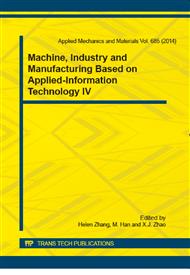p.512
p.517
p.524
p.528
p.532
p.536
p.540
p.545
p.549
Applied-Information Technology in Certificateless Proxy Signature Scheme without Bilinear Pairings
Abstract:
This paper researches on the existing certificateless proxy signature scheme, there is almost no certificateless proxy signature scheme based on discrete logarithm up till now. Combining the knowledge of discrete logarithm over finite field and the advantages of certificateless cryptography, this paper proposes an efficient certificateless proxy signature scheme based on the discrete logarithm without bilinear pairings. To avoid the key escrow problem in the id-based cryptosystem and the saving certificate problem in the traditional public cryptography, meet the good properties of the proxy signature, such as unforgery, dependence of the proxy keys, distinguish of the proxy signature and anti-abuse. The scheme does not use the bilinear pairings, and based on the hard problem of discrete logarithm in the finite field, given the proof and discussion of the validity and security of the scheme.
Info:
Periodical:
Pages:
532-535
Citation:
Online since:
October 2014
Authors:
Keywords:
Price:
Сopyright:
© 2014 Trans Tech Publications Ltd. All Rights Reserved
Share:
Citation:


